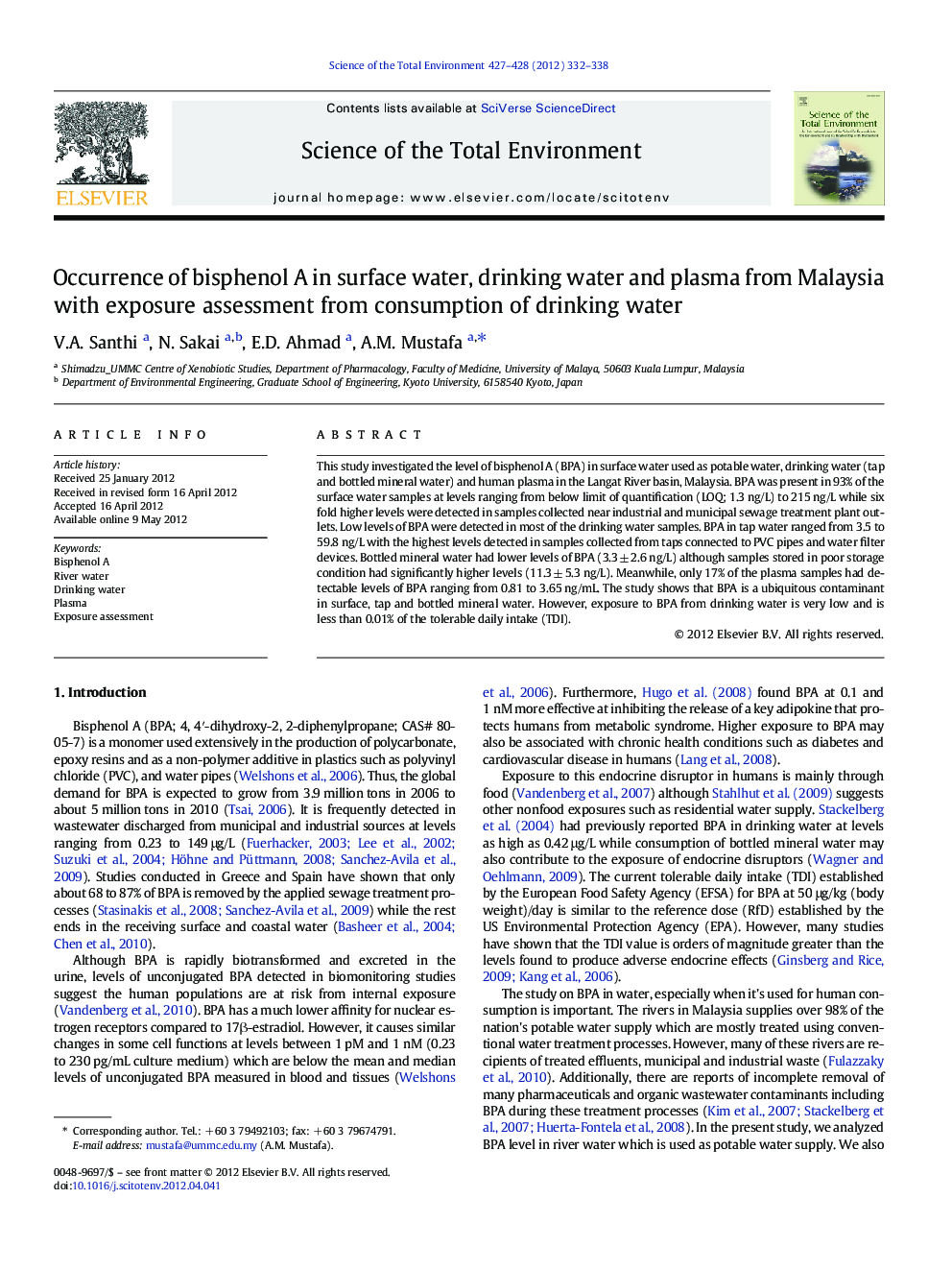| کد مقاله | کد نشریه | سال انتشار | مقاله انگلیسی | نسخه تمام متن |
|---|---|---|---|---|
| 4429438 | 1619824 | 2012 | 7 صفحه PDF | دانلود رایگان |

This study investigated the level of bisphenol A (BPA) in surface water used as potable water, drinking water (tap and bottled mineral water) and human plasma in the Langat River basin, Malaysia. BPA was present in 93% of the surface water samples at levels ranging from below limit of quantification (LOQ; 1.3 ng/L) to 215 ng/L while six fold higher levels were detected in samples collected near industrial and municipal sewage treatment plant outlets. Low levels of BPA were detected in most of the drinking water samples. BPA in tap water ranged from 3.5 to 59.8 ng/L with the highest levels detected in samples collected from taps connected to PVC pipes and water filter devices. Bottled mineral water had lower levels of BPA (3.3 ± 2.6 ng/L) although samples stored in poor storage condition had significantly higher levels (11.3 ± 5.3 ng/L). Meanwhile, only 17% of the plasma samples had detectable levels of BPA ranging from 0.81 to 3.65 ng/mL. The study shows that BPA is a ubiquitous contaminant in surface, tap and bottled mineral water. However, exposure to BPA from drinking water is very low and is less than 0.01% of the tolerable daily intake (TDI).
► BPA was present in 93% of river water samples used as potable water.
► Six-fold higher levels were detected in industrial and sewage effluents.
► Low levels of BPA at up to 59.8 ng L− 1 were detected in drinking water.
► Unconjugated BPA was detected in 17% of plasma samples at levels up to 3.65 ng mL− 1.
► Exposure to BPA from drinking water is very low.
Journal: Science of The Total Environment - Volumes 427–428, 15 June 2012, Pages 332–338